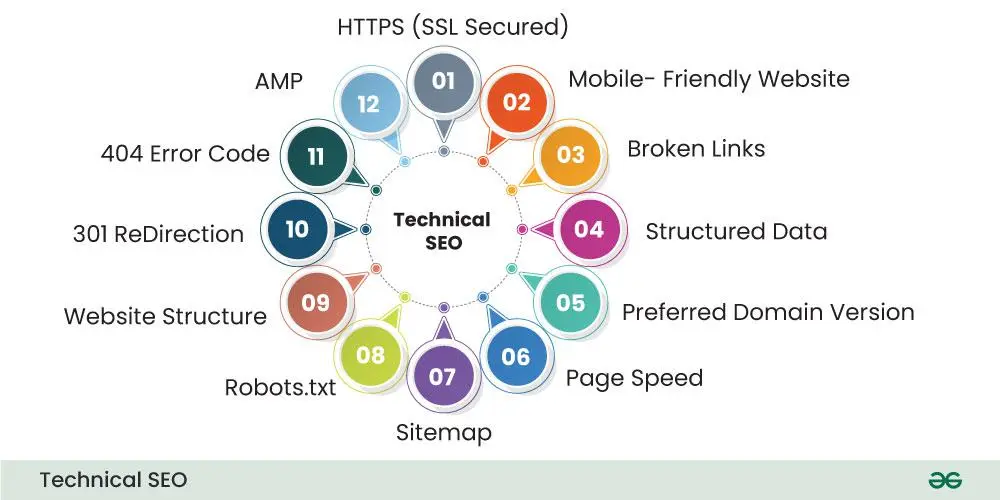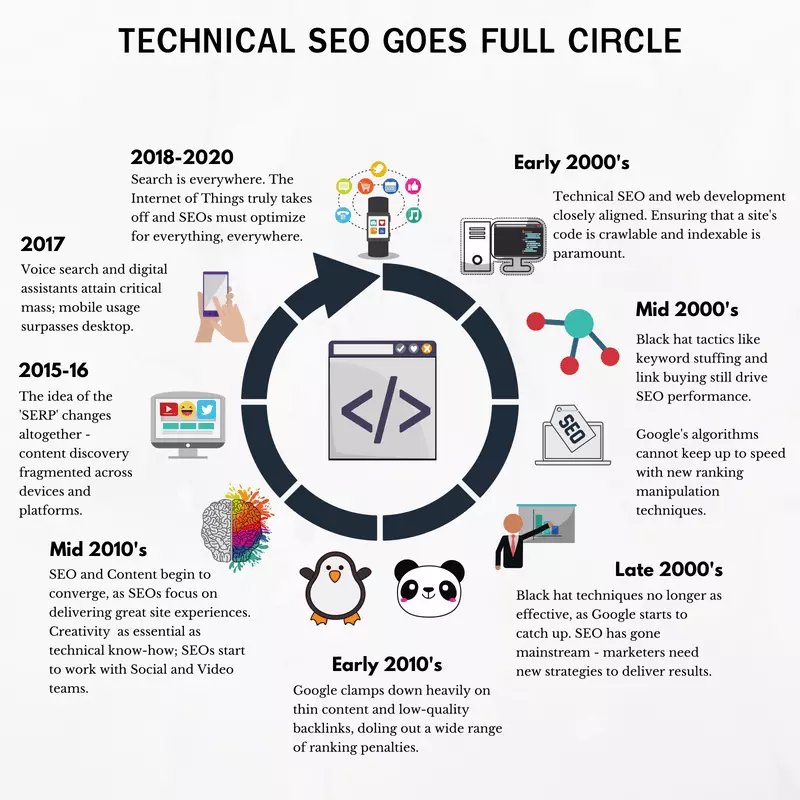Technical SEO is the foundation of a well-optimized website. While content and keywords are important, they do not help much if your site is not crawlable, indexable, and technically sound. In this blog, we will break down what technical SEO is, why it matters, and how to implement its key elements to improve your visibility in search engine performance.
INTRODUCTION
Technical SEO refers to optimizing a website’s infrastructure to help search engines to crawl, index, and render it efficiently. It is the starting point for all other SEO strategies — without it, off-page SEO (content and backlinks) is worthless.
With the help of technical SEO we ensure better crawlability and indexing of the web-pages. It improves site loading speed and consequently, user experience. Technical SEO enables us to take precautionary steps so that technical issues can be minimised. This is very essential for mobile optimization and core web vitals.
TECHNICAL SEO ELEMENTS: CRAWLABILITY & INDEXING
CRAWLABILITY
Crawlability in technical SEO means that web-pages are crawlable for search engines. In other words, crawlability ensures that search engines can reach to the web-pages.
INDEXING: PART OF TECHNICAL SEO
Indexing is another popular term for technical SEO. It implies indexing the web-pages in google database or library. As and when search engines understands web-page content and find it to be unique and original, then this indexing is done.
ROBOT.txt FILE: PART OF TECHNICAL SEO
This txt file control as to “which pages” search engines can control. Misconfigured files can block important pages from indexing.txt.
XML SITEMAP: PART OF TECHNICAL SEO
Sitemaps are a way for webmasters to inform search engines about pages on websites that are available for crawling. This is submitted through Google Seach Console for increasing the speed of indexing.
CANNONICAL TAG: PART OF TECHNICAL SEO
Prevent duplicate content issues by pointing to the original URL of a page.
SITE STRUCTURE IMPORTANT ATTRIBUTR FOR TECHNICAL SEO
Users navigation becomes easier if site structure is flat and logical one. Site structure also require working on URLs. URL of the site must be short and descriptive URL. Always choose Static URL over dynamic URL like ?id=123. Internal linking of the web-pages also improves site structure and add on in the ranking of the pages. Additionally, descriptive anchor text also works well in technical SEO. These all steps Strengthens crawlability for the bots and distribute authority across pages.

TECHNICAL SEO IMPROVES MOBILE OPTIMIZATION
Websites that perform well on mobile devices are Google lovable babies. Google considers and prioritize mobile friendly sites for indexing and ranking purpose. Hence, mobile optimization for websites require sites should pass on following parameters:
- Responsiveness
- Avoid intrusive pop-ups
- Site should adapt to all devices like phone, tablets
- Ensure tap targets like buttons, links, menus, icons are appropriately sized.
TECHNICAL SEO IMPROVES SITE SPEED & CORE WEB VITALS
Core Web Vitals are a set of specific factors that Google considers important in a webpage’s overall user experience. They includes loading speed, interactivity, and visual stability. Web-page loading speed affects ranking and bounce rate both. Hence, tools for loading speed, web vitas and speed optimization of the web-page are as under.
Tools for web vitals are:
- Largest Contentful Paint (LCP) – loading performance
- First Input Delay (FID) – interactivity
- Cumulative Layout Shift (CLS) – visual stability
For loading speed tools are:
- Google Page speed Insights
- GTmetrix
Tools for Speed optimization are:
- Optimizilla- Compress images
- Apache- Enable browser caching and use a CDN
- Minifier.org- Minify CSS/JavaScript.
HTTPS & WEBSITE SECURITY: IMPORTANT PART OF TECHNICAL SEO
A secure website confirms ranking factor. For this, HTTPS and website security should be check. As HTTPS encrypts data between browser and server. Furthermore, adding Secure Sockets Layer(SSL) regularly avoid browser warnings. Also, Fix mixed content issue (ensure images, scripts, stylesheets, etc. on HTTPS website are loaded over HTTPS) to improve HTTPS & website security.
STRUCTURE DATA AND SCHEMA MARKUP
In technical SEO, Schema markup are part of rich snippets and enhances search appearance. Schema markups are the codes that assist search engines to understand content better. Schema markups includes Product, Review, FAQ, Article, Local Business, Recipe and so on.
Tools for Implementing Schema
- Google’s Structured Data Markup Helper
- Schema.org
- Plugins like Rank Math or Yoast SEO (for WordPress).
HANDLING DUPLICATE CONTENT
Duplicate content confuses search engines and consequently bot gets diluted hence affects are ranking. HTTP vs HTTPS and www vs non-www, URL parameters are the reasons for duplicate content. Technical SEO fixes this problem with the help of Canonical tags, 301 redirects and Avoid thin or copy-pasted pages.
TECHNICAL SEO TOOLS
Popular Tools to Use
- Google Search Console (crawl errors, indexing)
- Screaming Frog (site audits)
- Ahrefs/Semrush (technical audits)
- GT metrix / Google Page Speed Insights (speed).
REGULAR SEO AUDITS

In technical SEO, regular audits are mandatory if you want your website’s visibility to be maintained. This era is dominating by the technology that is keep changing. Hence, going with the changes is a pre-requisite to be stick in professional fields. As websites are changing over time and new errors are coming with the time.
So if we keep an eye over the changes and do regular audits to gain information about the changes. We can assure our objective easily. We need to keep audit if there is any crawl error hindering search engines in finding the web-pages, or if there are any broken links. We should also check loading speed and mobile usability of the web-pages with website. Also keep a track on indexing status of the web-pages.
As soon as we find errors in our website, the next step is to tackle these issues with suitable tools and exercises as suggested in the article. If we keep an eye on our website performance as well as on our competitors website, then we are in right direction.
CONCLUSION
Technical SEO may seem complex, but it is a critical part of achieving high search engine rankings. Technical SEO is not a one-time task — it is a ongoing process. By focusing on crawlability, speed, mobile responsiveness, and structured data, we can build a strong foundation for long-term SEO success. As a technically sound site improves ranking, UX, and overall performance. Regular audits and improvements will ensure site to remains optimized as algorithms evolve.

